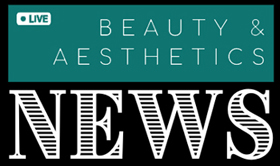The Professional Beauty Association’s (PBA) Nail Manufacturers Council on Safety (NMC) has announced its support of an independent study that demonstrates that UV (ultraviolet) nail lamps are safe and do not increase the risk of developing skin cancer.
This follows comment released by nail scientist, Doug Schoon, in response to concerns about the safety of UV nail lamps.
Recent findings published by scientists at Massachusetts General Hospital and the Alpert School of Medicine at Brown University in the Journal of Investigative Dermatology, as well as studies conducted by an independent laboratory testing company, Lighting Science, Inc., disprove internet stories and media coverage suggesting such lamps may be unsafe.
A study published in the spring 2013 issue of Photochemistry & Photobiology supports these recent findings. This study, Photobiological Safety Evaluation of UV Nail Lamps, co-authored by Dr. John C. Dowdy & Dr. Robert Sayre, co-inventor of the SPF rating system for sunscreens, set out to determine if traditional fluorescent and LED-type nail lamps produce excess amounts of UV and increase the risk of skin cancer.
Both authors have published extensively and are widely recognised as experts on UV light. Utilising internationally accepted standards for characterising and measuring UV, they reached several conclusions about skin safety:
- Dowdy and Sayre found that UV nail lamps exceeded safety expectations. These lamps were found to be significantly less hazardous than expected based on the initial concerns raised by others. The researchers found that UV exposure is so low that a person could put her hands under a nail lamp for 25 minutes a day without exceeding the internationally accepted safe limits for daily workplace UV exposure. Typical nail salon exposures, i.e. less than 10 minutes per hand performed on average only twice per month or less, are well within the limits of permissible daily UV exposure.
- The researchers concluded that the risk of developing non-melanoma skin cancer was 11-46 times lower than the risks of being exposed to noonday natural sunlight. The data showed that UV nail lamps were safer than both natural sunlight and sunlamps. Therefore, it is highly improbable that any salon customer, no matter the level of nail lamp use, will exceed safe levels of UV exposure.

Doug Schoon
“With this latest article adding to available extensive research, consumers should not be concerned about developing cancer from using UV nail lamps,” comments leading nail industry scientist & NMC Safety co-chair, Doug Schoon. “Multiple prominent sources have dispelled the exaggerated claims that these lamps are harmful. In reality, the UV exposure created by nail lamps is very minimal.”
A release from the PBA adds: “The study also mentions two considerations for safe UV nail lamp use. Customers who are taking medication that requires them to avoid natural sunlight without proper protection, should be cautious when using UV nail lamps. Also, incorrect bulb replacement and lamp maintenance could be harmful to the skin.
“Overall, Dowdy and Sayre’s findings support the earlier research reported in an independent Lighting Sciences study and in the Journal of Investigative Dermatology, concluding that UV nail lamps are safe and do not cause, or increase the risk of, cancer.”
For full coverage of the latest UV nail lamp study, click here.


